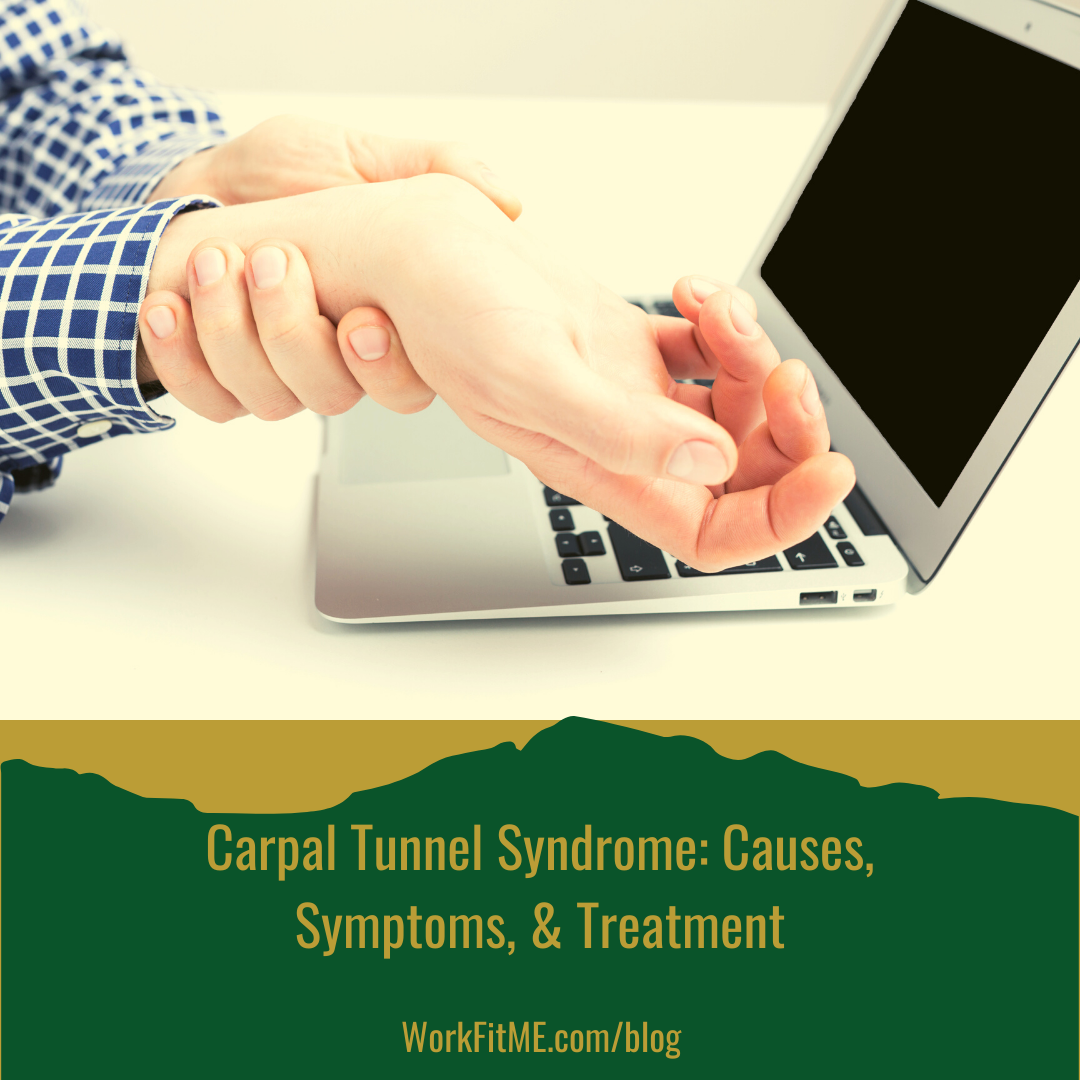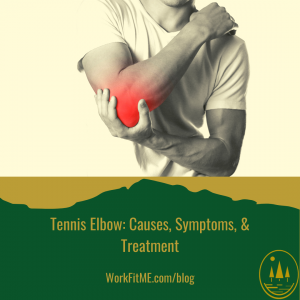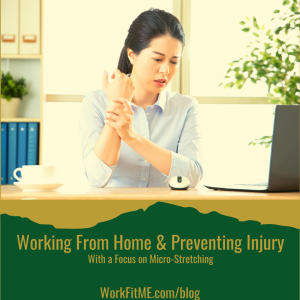In the last blog and in our very first blog, carpal tunnel syndrome was a topic of discussion. Because of that, I wanted to take a deeper dive into it and give a little insight about why it can be a difficult condition to treat (but doesn’t have to be) and how to treat and prevent it. When doing research for the first blog on workplace injury prevention, I was astonished to discover that carpal tunnel syndrome caused only one less missed day of work than AMPUTATION did. That statistic is so alarming to me because carpal tunnel is very preventable and, when the appropriate treatment is started quickly, very treatable. The delay with treatment usually stems from not identifying and treating the root cause of the issue soon enough. So lets take a closer look at the carpal tunnel to get a better understanding about what is going on and how to prevent and treat it.
The Carpal Tunnel
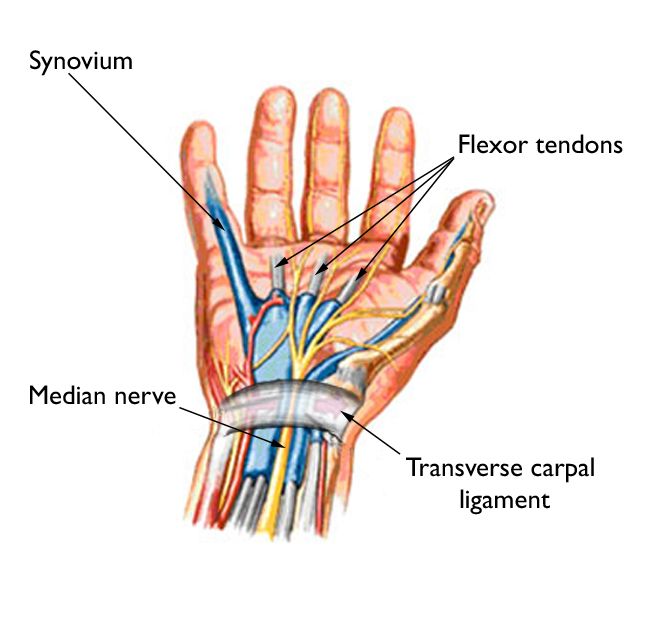
The carpal tunnel is a very small area at the base of the wrist where nine tendons and the median nerve go through two bones in the wrist and under a ligament that connects these bones as they make their way to the thumb and fingers. Each ligament is surrounded by a protective sheath. The size of the carpal tunnel makes very close quarters for all ten structures to pass through. That is a big factor in the process that leads to carpal tunnel syndrome.
Causes of Carpal Tunnel Syndrome
The cause of carpal tunnel syndrome is irritation of the median nerve which passes through the carpal tunnel along with the nine tendons that go to the fingers and thumb. When the nine tendons move and slide past each other repetitively, over time, inflammation around those tendon sheathes can occur. This fills up the small space made by the carpal tunnel and places stress on the median nerve.
Any repetitive motion of the forearm, wrist, hand and fingers can lead to this inflammation. Direct compression on the carpal tunnel along with using the wrist, hand, and fingers with the wrist bent up can also cause inflammation and compression on the median nerve. It usually takes time to develop, although a drastic change in activity that required repetitive use of the hands and wrist could bring on symptoms faster. Typically this affects people who have done repetitive tasks such as typing and mouse work, answering phones and using a computer, or gripping and twisting activities for many years.
Symptoms of Carpal Tunnel Syndrome
Pain, numbness and tingling, and weakness in the hand are all symptoms that can be experienced with carpal tunnel syndrome. Like many nerve irritation and compression injuries, pain and tingling will often occur before numbness and weakness. Those symptoms take longer to develop meaning the nerve is irritated or compressed for a longer period of time.
The picture below shows the areas where pain and numbness and tingling occur. Notice the symptoms are all below the wrist in the hand and fingers. That is key. If symptoms started above the wrist (closer toward the elbow or shoulder) and progressed to the wrist and hand, the carpal tunnel is not the original culprit of the nerve symptoms. In a previous blog on back pain and sciatica, we explained that nerves can cause radicular pain (pain that radiates away from the site of irritation/compression). This radicular pain is always “down stream” of the site of irritation. If symptoms started above the wrist, the carpal tunnel is not the only area that may need to be addressed, it may not need to addressed at all. This is often a reason why people have trouble treating nerve symptoms that may be felt in the hand or wrist. If carpal tunnel syndrome is incorrectly identified as the reason for nerve symptoms, treatment for carpal tunnel syndrome may be delivered. That includes SURGERY to release the carpal tunnel which may not help the symptoms AT ALL! Luckily, physical therapists are expertly trained to tease that out. But more on that later.
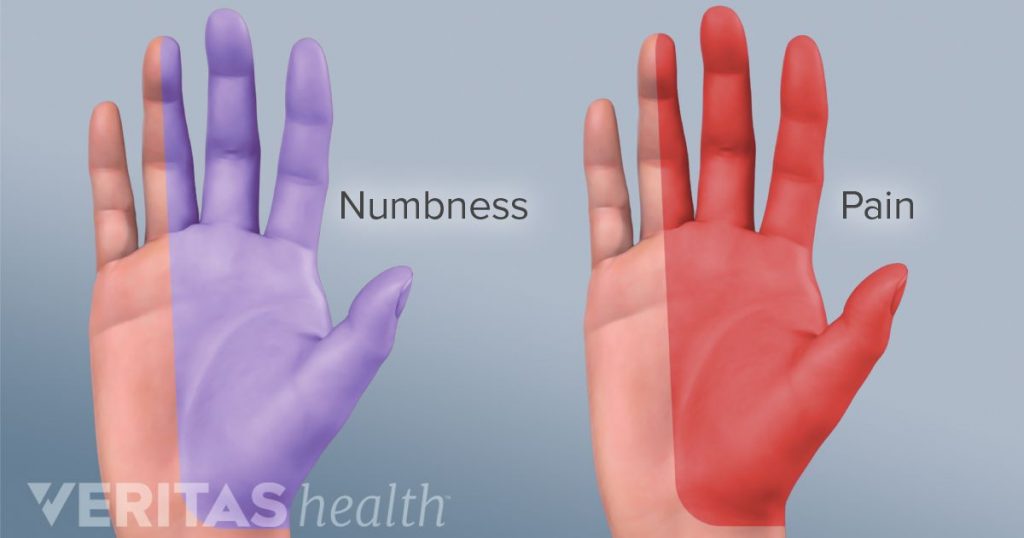
The weakness that can develop, usually with prolonged compression of the median nerve in the carpal tunnel, is from the median nerve not being able to communicate with muscles at the base of the thumb and between the thumb and pointer finger and the pointer finger and middle finger. The longer a nerve is irritated or compressed, the more symptoms that can be seen. Tingling can turn into numbness and, if the nerve becomes more compressed than irritated, it will stop telling those muscles to contract. That can lead to dropping things or feeling clumsy with the involved hand. If properly identified and treated soon enough, these progressed symptoms can be avoided!
Treatment of Carpal Tunnel Syndrome
Whenever a nerve is involved, getting the correct treatment for the cause of the nerve irritation and/or compression as soon as possible is very important. The longer a nerve stays irritated or compressed, the longer it takes to decrease the symptoms. Depending on severity of symptoms, some of them may never fully resolve if left untreated. Physical therapy has been shown to be very effective at treating carpal tunnel syndrome and preventing it from returning. Using a brace while working on the repetitive tasks that caused the symptoms, as well as at night, is also effective. But improving strength, endurance and mobility will be key in preventing the return of symptoms when the braces are off.
Stretching the wrist flexor muscles along with a stretch focused on the tendons that pass through the carpal tunnel can be helpful at treating and preventing carpal tunnel syndrome. When stretching, be sure the stretch is not so intense that it brings on the symptoms. These gentle stretches should relieve symptoms over time. Aggravating a nerve while trying to decrease stress on it is the opposite of what we are trying to do with treatment.
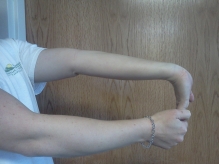


https://www.instagram.com/tv/CAV0aAVgCrz/?utm_source=ig_web_copy_link
Working on grip strength and endurance is also useful to improve the ability of the muscles and tendons to work more efficiently during repetitive tasks without causing inflammation. This can be done with a stress ball or anything that will apply resistance to gripping activity. Repeating three rounds of gripping for one minute at a time helps build that endurance. One minute is the goal but if symptoms come on at any time, stop, rest and then resume once symptoms go away. Work up to the one minute.
Finally, strength, endurance and stability of postural muscles may also be warranted. Anytime a nerve is irritated, any area along that nerve from the neck down to its end point can also cause more irritation. Decreasing stress all along the path of the median nerve is helpful even when symptoms are only felt in the wrist and hand.
Get the Right Treatment Sooner
Carpal tunnel syndrome is only difficult to treat if left untreated for too long. Sometimes it is actually over diagnosed and treated when the carpal tunnel isn’t even the root cause of the nerve symptoms. Can you imagine having a surgery that won’t even address the symptoms you are having AT ALL?!?! Early identification of the TRUE CAUSE of a nerve irritation or compression will allow treatment to be more effective. Physical therapists are expertly trained at identifying the cause of nerve symptoms, treating them, and preventing them from coming back. In the great state of Maine, direct access allows patients to go directly to a physical therapist without the requirement of a doctor’s referral and get the appropriate treatment sooner rather than later. Contact us today to book your appointment to make sure you can live pain free, work pain free, and not let a preventable injury stop you from doing what you love.

